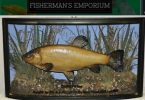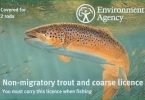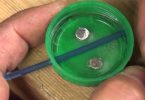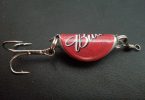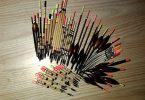Koi Herpesvirus (KHV) is a disease of common carp and carp varieties such as Koi. It can kill all the carp in a fishery, is easily spread and tends to occur in the summer when water temperatures reach between 15 oC and 28 oC. Fish showing clinical signs of the disease usually die within hours. At lower temperatures, fish may carry the virus that causes this disease without any obvious signs of infection making it difficult to detect without specialised tests. There is still a lot that we do not know about KHV disease and there is currently no treatment for it.
The disease is most likely to be spread by the introduction of infected fish into fisheries and other angling waters. It is also possible that the virus responsible for causing KHV can be transmitted through contact with wet fishing equipment. To protect your fishery, or the place you fish, there are some practical steps you can take which will minimise the chance of fish becoming infected with KHV and help to prevent the spread of the disease. By following this simple guide you will reduce the risk of a KHV outbreak occurring and help to ensure that responsible carp angling continues:
1. Do not stock fish unnecessarily, particularly species susceptible to KHV such as common carp
Stocking infected fish is the most likely way that KHV could be introduced into your fishery.
Always think carefully before stocking fish as it may be difficult to detect fish infected with the disease, particularly at lower water temperatures. Consider alternative ways to improve the fishery and, if necessary, develop a stocking plan based on a clear understanding of what you are trying to achieve. Do you know what type of fish and how many are already present in the water you are considering stocking? Do you know how many fish your water can sustain? If in doubt, take advice from the Environment Agency – it could help to protect your fishing and save you money?
2. If you do stock fish, always ensure that you have consent from the Environment Agency
The process of gaining consent will help to ensure that you are not stocking fish from somewhere with a known disease problem. Never stock fish without consent, it could be harmful to your fishery and it is a criminal offence.
3. Always stock fish from a reliable source and ensure the fish are health checked
Remember, KHV may be difficult to detect and standard health checks may not be sufficient to confirm that the fish are not infected. Insist on knowing the source of your fish and minimise the risk of disease transfer by not mixing stock from different sources. Fish from hatchery-reared fish farms will have a known health history and pose a lower risk than wild-cropped fish.
4. Never stock ornamental fish
KHV has been a major problem in the ornamental fish trade and the stocking of ornamental fish such as koi significantly increases the risk of introducing disease.
Do not stock ornamental varieties of fish into your fishery
5. Minimise the potential for fish to become infected by maintaining good fisheries management practices
Good quality habitat will help to ensure that fish remain healthy. Features such as variations in water depth, plants in the water and waterside plants and trees will all be beneficial.
Maintain a variety of fish species in your fishery. Fisheries dominated by a single fish species can be more susceptible to disease problems.
Check the water quality of the fishery regularly, particularly during warmer months when fish will be most active. Take advice from your local Environment Agency fishery officer on how to do this and what the results mean.
If you maintain a high stock level in your water, take swift action to rectify water quality problems and minimise fish stress. Monitor oxygen levels and take steps to oxygenate the water before problems occur. Supplemental feeding with a high quality carp feed can help maintain good nutrition, but keep an eye on ammonia levels.
6. Ensure responsible angling practices
Minimise fish stress as much as possible. Use unhooking mats when handling large fish and enforce keepnet limits at match waters. In very warm weather, good handling is critical and fish should not be retained.
Dirty and wet fishing tackle (nets and unhooking mats etc.) could spread diseases, including KHV. There are two main ways of disinfecting fishing tackle. The first is to thoroughly dry equipment after fishing, preferably in direct sunlight. If this is not practical, then a chemical disinfectant can be used. These include iodine-based disinfectants (iodophores), or Virkon® S. For advice on disinfectants, talk to the Environment Agency.
Disinfectant dips for nets can be used, but make sure the chemicals used are fresh and anglers use them correctly. For the best possible protection from disease, only allow anglers to use nets or unhooking mats supplied by the fishery.
7. Stop angling on any water where fish are dying or showing symptoms of disease
The Environment Agency strongly advises that angling should stop on any water where fish are dying or showing disease symptoms – this helps reduce stress on the fish and may aid their recovery.
Once fish have stopped dying and the remaining fish are showing signs of recovery, such as feeding, then there is no reason why angling should not start again. However, fisheries that have had a disease outbreak should make landing or keep nets available for anglers to use on affected sites. This will reduce the risk of spread of the disease, protecting other local fisheries, and reduce concerns of other fishery owners.
8. If you suspect that fish have KHV you must notify the Fish Health Inspectorate (FHI) at the Centre for Environment, Fisheries and Aquaculture Science (Cefas), Weymouth (Tel: Tel: 01305 – 206600 Fax: 01305 – 206602 Email: fishhealthinspectorate@cefas.co.uk or the Environment Agency on 08708 506 506 or out of office hours 0800 80 70 60.
KHV disease may be suspected if dead or dying fish with other clinical evidence such as bleeding from the gills, white patches on the gills or skin, sunken eyes and hyperactive behaviour are found in fisheries, other inland waters, fish farms, fish dealers, retailers, aquaria and garden ponds. These signs usually appear when water temperatures are between 15 oC and 28oC. For more information refer to: www.efishbusiness.co.uk or http://www.environment-agency.gov.uk/
– WE CAN MINIMISE THE IMPACT OF KHV DISEASE!

